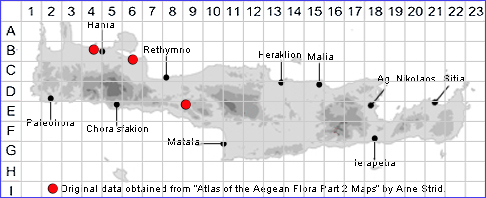SPECIES DESCRIPTION
HIBISCUS TRIONUM
Family and Genus:- See- MALVACEAE
Common Names:- Bladder hibiscus, bladder ketmia.
Homotypic Synonyms:- Ketmia trionum, Ketmia vesicaria, Trionum trionum.
Meaning:- Hibiscus (Gr) Old Greek name from Virgil for marsh mallow.
Trionum (Gr) Three-clawed.
General description:- Annual, somewhat bristly with the sharp stiff hairs lying
parallel and close to the surface.
Stems:-
1) 10-50 cm erect to decumbent, branched, with a line of small crispate hairs and
scattered setae.
Leaves:-
1) 4-7 cm, divided (except the lowest) more or less to the base into 3(-5) oblong-
lanceolate, usually deeply pinnatifid lobes.
Flower:-
1) Solitary on slender pedicels in the leaf axils.
2) Epicalyx-segments, with 10-13 several free, linear-lanceolate segments, and
bearing long, simple hairs.
3) Calyx, ± membranous, with dark purple veins, accrescent and somewhat inflated
in fruit; lobes broadly triangular.
4) Sepals, united for most of their length, with conspicuous, dark purple veins,
strongly accrescent, membranous and vesicular in fruit.
5) Petals, c. 20 mm, usually yellow with a purple blotch at base.
Fruit:-
1) Capsule, 5-locular, villous, enclosed in calyx.
Key features:-
1) Leaves glabrous, or hispid beneath.
2) Plant not spiny.
3) Sepals, united for most of their length, membranous in fruit.
Habitat:- Cultivated and fallow fields, olive groves. 0-500 m.
Distribution:- Scattered in Peloponnisos and mainland Greece The Balkans
eastwards, including Cyprus; sometimes naturalised in the W Mediterranean. On
Crete known only from a few locations in the west. Rare.
Flowering time:- (May-) July-Sept.
Photos by:- Artemis Roukounakis

